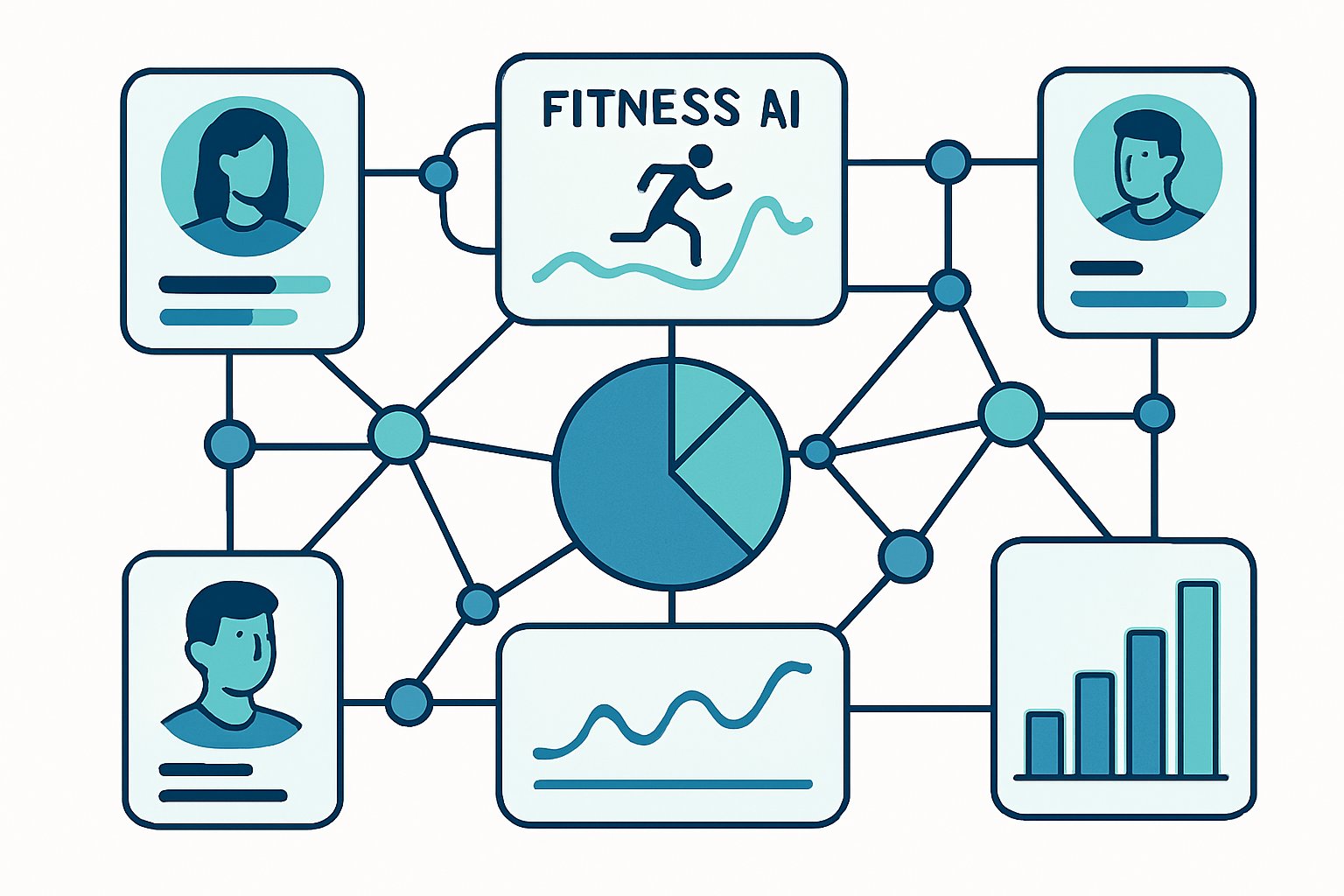
AI CERTS
4 hours ago
Fitness AI Redefines Personalized Wellness Results
Current Market Momentum Snapshot
Investor decks echo soaring adoption. Peloton, Apple, Garmin, and Noom updated platforms with adaptive logic. Moreover, McKinsey reports firms mastering personalization gain roughly 40 % more related revenue. Although revenue differs from physiological change, commercial traction attracts capital. Meanwhile, Western Colorado University found AI-guided workouts improved cardiorespiratory health by 12 % within their cohort.

Industry press releases often reference engagement lifts between 20 % and 45 %. Nevertheless, public peer-reviewed trials rarely match those heights. A JAMA randomized study showed AI-led diabetes prevention matched human coaching, not surpassed it. Therefore, the headline figure of 41 % remains unverified for defined health endpoints.
These adoption signals illustrate momentum. In contrast, evidence consistency still lags.
Rigorous validation remains essential before scaling promises.
Evidence Versus Bold Claims
Researchers classify outcomes differently. Engagement may involve daily opens, while adherence quantifies completed workouts. Furthermore, clinical studies focus on weight, A1c, or VO2 max. Consequently, percent improvements vary wildly across reports.
The JMIR scoping review highlighted 41 % of examined projects providing personalized activity plans. Importantly, that figure reflects prevalence, not efficacy. Similarly, vendor A/B tests often blend marketing incentives with product changes, muddying causality.
Experts recommend four verification steps:
- Define “results” with precise metrics and baselines.
- Use randomized, controlled designs when feasible.
- Publish protocols and confidence intervals.
- Invite independent audits for transparency.
These steps tighten evidence quality. Subsequently, stakeholders can compare interventions fairly.
Core Benefits Explained Clearly
Despite gaps, strong advantages motivate rollout. First, Fitness AI personalizes intensity, rest, and recommendations in near real time. Additionally, algorithmic nudging sustains motivation via timely prompts. Moreover, scalable automation curtails coaching costs.
Key reported gains include:
- Higher retention among subscription cohorts.
- Increased session frequency per active user.
- Potential non-inferior clinical outcomes versus human programs.
Professionals can enhance their expertise with the AI Healthcare Specialization certification. The credential deepens technical, ethical, and regulatory understanding.
These benefits strengthen product value. However, organizations must track real-world effectiveness continuously.
Technology Drivers Underlying Personalization
Several converging advances enable modern Fitness AI engines. Computer vision analyzes posture through cameras. Meanwhile, graph neural networks map behavioral patterns across cohorts. Additionally, foundation models convert raw sensor streams into personalized insights.
Edge processing handles privacy-sensitive calculations on devices. Consequently, latency drops, and data exposure shrinks. Furthermore, cloud orchestration coordinates global model updates, ensuring consistent experiences.
The following technical stack often appears in leading Health Tech offerings:
- Wearable sensors capturing heart rate variability and motion.
- Real-time anomaly detection for injury risk.
- Adaptive recommendation engines refining workouts daily.
These components cooperate to create increasingly precise coaching. Subsequently, differentiation shifts from hardware to algorithms.
Risks And Ethical Considerations
Personalization relies on granular data. Consequently, privacy breaches can erode trust quickly. Moreover, biased training data may misguide recommendations for underrepresented groups. In contrast, transparent governance counters such pitfalls.
Regulators now examine wellness algorithms more closely. Additionally, medical device frameworks could soon apply to advanced coaching features. Therefore, product teams should embed model explainability and consent management early.
Key risk mitigations include rotating anonymization keys, periodic fairness audits, and accessible appeal channels. Nevertheless, ongoing vigilance remains mandatory as models evolve.
Mitigation reduces harm. However, reputational danger persists if communicative clarity falters.
Implementation Tips For Leaders
Company builders often ask where to start. First, map business objectives to measurable health or engagement metrics. Furthermore, pilot Fitness AI modules with small, diverse cohorts before full release. Additionally, integrate cross-functional teams spanning data science, design, and compliance.
Successful rollouts usually follow these phases:
- Baseline measurement of current key performance indicators.
- Iterative algorithm deployment with AB gating.
- Post-launch monitoring and rapid remediation loops.
Executives should communicate limitations candidly. Consequently, user expectations align with achievable outcomes. Moreover, aligning incentives prevents overhyped marketing statements.
Structured implementation safeguards reputation. Subsequently, leadership can scale with confidence.
Future Outlook And Research
Algorithmic sophistication will likely accelerate. Moreover, multimodal inputs such as sleep patterns and stress biomarkers will refine personalization. Meanwhile, academic collaborations will test long-term clinical endpoints.
Several research needs persist:
- Standardized outcome taxonomies for comparative studies.
- Open datasets that capture diverse populations.
- Explainable interfaces that build user trust.
Funding agencies recognize these gaps and plan targeted grants. Consequently, rigorous trials could soon clarify disputed effect sizes. Additionally, regulatory clarity may emerge, defining acceptable evidence thresholds.
These developments promise clearer guidance. However, stakeholders must participate actively to shape responsible standards.
Overall, Fitness AI stands at an inflection point. Verified efficacy and transparent governance will decide its lasting impact.
Key Takeaways Recap
• Market adoption surges despite evidence variability.
• Personalization boosts engagement and scalability.
• Ethics, privacy, and fairness demand proactive design.
Leaders who balance innovation with responsibility will unlock sustainable advantage.
Action Steps Forward
• Audit existing metrics and establish rigorous baselines.
• Enroll relevant teams in the linked certification to sharpen skills.
• Plan transparent communication outlining algorithmic limitations.
These actions translate insight into operational excellence.
Consequently, organizations can convert hype into measurable, equitable impact.
Fitness AI adoption accelerates; preparedness differentiates winners.
Conclusion And Call-to-Action
Fitness AI offers scalable personalization, commercial upside, and emerging clinical parity. However, unverified claims risk credibility. Therefore, leaders must demand transparent metrics, prioritize ethical safeguards, and commit to continuous validation. Moreover, interdisciplinary collaboration accelerates responsible innovation. Professionals aiming to spearhead trustworthy Health Tech initiatives should consider specialized education. Explore the linked certification to elevate strategic and technical capabilities today.



